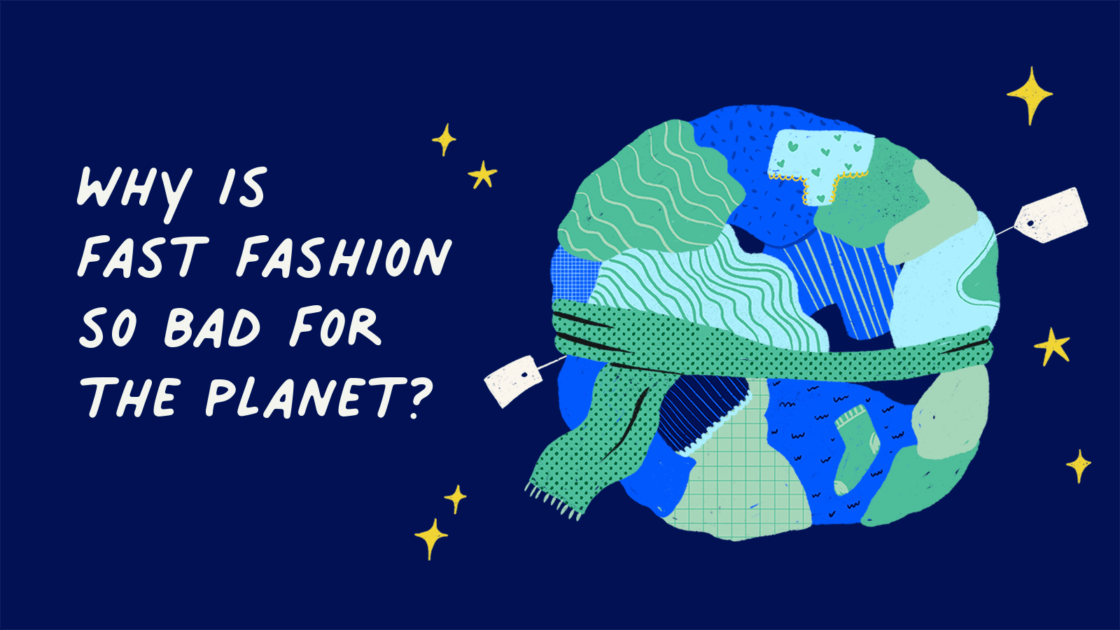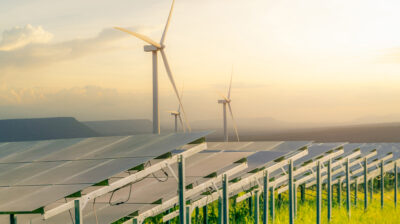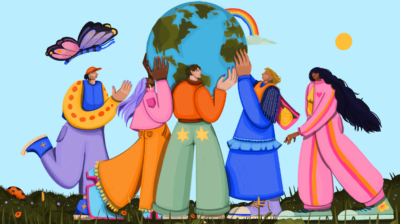What is fast fashion?
Find out what fast fashion is, its negative impacts on the planet and what solutions there are for the fast fashion industry.


The fast fashion industry is one of the most profitable industries in the world, making billions of euro each year. Fast fashion also has a negative impact on the environment.
What is fast fashion?
Clothing accounts for 60% of all textiles used and produced in the last 15 years. While the production of clothing has doubled in this time, the number of times an item is worn has declined by almost 40%, according to the Ellen MacArthur Foundation. This is due to the fast fashion industry, and is a clear indication that we are consuming far more than we need.
Fast fashion is cheap clothing, quickly produced in the latest styles and inspired by high end designers, celebrities or influencers. These new styles arrive in clothes shops as soon as possible so they can be available while they are still popular. The clothes are not made to last and often end up looking faded or out of shape after just a few washes.
Fast fashion brands make these trendy clothes out of cheap material and use low-paid workers to keep production costs down. The industry thrives on fast moving trends and the ‘take, make, waste’ economic model – where we take the earth’s resources to make disposable products that end up in the bin.
The history of fast fashion
It wasn’t always this way. Only after the industrial revolution in the mid 1800s did the production of textiles ramp up thanks to inventions like the first sewing machine spinning jenny, the water frame and the power loom. These machines needed far less human labour than traditional ways of making clothes, and so the price of clothing fell and there was a big increase in production.
Dressmaking shops opened to make clothes for middle class women. They often had a team of dressmakers who worked from home on a low wage. This gave an early insight into the production of modern clothes. One of the first significant clothing factory disasters was in 1911 when New York’s Triangle Shirtwaist Factory went on fire, killing 146 workers.
History repeated itself in 2012 when there were large factory fires in Pakistan and Bangladesh that killed hundreds of garment workers.
In the 1960s and 1970s, clothes become a popular form of personal expression, but trends from high fashion were still different from everyday clothing. However in the late 1990s the giant fast fashion retailers we know today started producing designs inspired by high fashion and celebrities quickly and cheaply.
The impact of fast fashion
Fast fashion can have a real impact on the lives of people who make the clothes and on the environment.
The environmental impact of fast fashion
The global fashion industry produced around 2.1 billion tonnes of greenhouse gas emissions in 2018, equalling 4% of the global total
Fast fashion clothes are often made with toxic dyes and use an excessive amount of water. These clothes become one of the main sources of microplastics in our ocean as they are often made from synthetic materials like polyester or nylon. These chemicals and microplastics can be very damaging to ecosystems on land and in the sea. Wildlife is threatened by this waste too as it can end up in their food.
Natural fabrics can also be a problem at the scale they are produced in the fast fashion industry. For example, cotton uses a huge amount of water and pesticides, which can actually be damaging to the environment and local communities. Animals are also at risk from the fast fashion industry when they are used for materials like leather, fur and wool.
Human rights in the fast fashion industry
Not only does the environment suffer from the manufacturing of these clothes but the people who make the clothes do too. Factories are often based in countries where the minimum wage is between half to a fifth of the living wage. Many garment factory workers often receive below that minimum wage and work for long hours, in dangerous conditions.
Fast fashion has a damaging impact on its buyers too, pressuring everyone to stay in the latest style and to shop more.
How will I know if it’s fast fashion?
Here are a few ways to tell if you’re looking at a fast fashion brand. The shop or website will have:
- A very large selection of clothing
- Trending styles
- New items every day or every few days
- Limited stock on certain items
- Synthetic materials like polyester, viscose or nylon
- They make their clothes in a different country where workers rights are of a low standard
What about sustainable lines by fast fashion companies?
Sometimes fast fashion companies will advertise their clothes as organic cotton, recycled polyester, bamboo or ‘made from sustainable materials’. But often these clothes are less sustainable than they seem. When viewing clothes that claim to be sustainable, look out for voluntary environmental certifications like the Global Organic Textile Standard (GOTS) or the EU Ecolabel. Manufacturers might also mix sustainable materials with synthetic fibres, so make sure to check your label before you buy something on the basis that it’s ‘sustainable’.
Fast fashion brands can also claim to have environmentally friendly practices or be carbon neutral, but continue to treat production workers poorly and to over-produce their products, creating waste.
When a fast fashion company poses in a misleading way as being sustainable, it is called greenwashing. Some websites and apps, like Good on You, can help you to make a more informed decision about where to buy your clothes. You could also do your own research on the company’s practices before buying.
Is fast fashion getting better?
While some companies may change their practices to be more sustainable for the environment and their workers, new fast fashion websites are popping up every day. It is a very profitable business model as the manufacturing cost is kept to a minimum at the cost of the planet and low paid workers.
This is why it is important to be aware of what a fast fashion company is in detail. You can also help your friends and family spot fast fashion brands and greenwashing.
What can I do about fast fashion?
While it’s very difficult to avoid fast fashion entirely when you shop for clothes, it’s important to be aware of what kind of business you’re supporting and what impact it has on the planet, and make the people close to you aware too. At the very least this may lead to everyone buying less fast fashion in the long run.
It may not always be possible to avoid fast fashion, especially if it’s the only affordable option to you. At the end of the day the only way these damaging practices will end is through large changes to the businesses themselves and regulations that protect workers and the environment. You can help stimulate change by being vocal on the issue and campaigning for better practices.
Trying to buy less from these companies, buying second hand clothes, repairing and wearing your own clothes for longer are a few ways you can be sustainable about your clothing choices.
Cover image by Cathy Hogan






